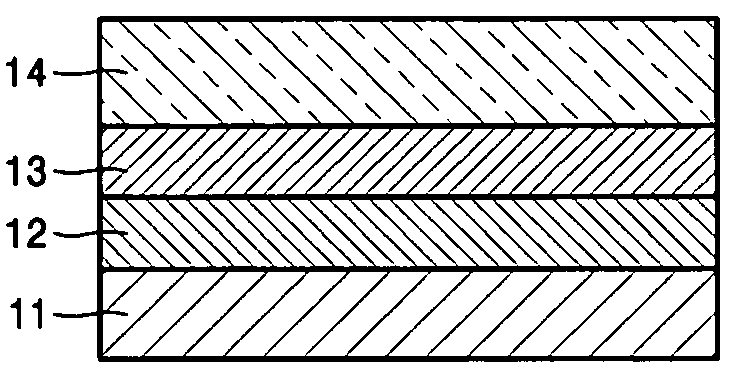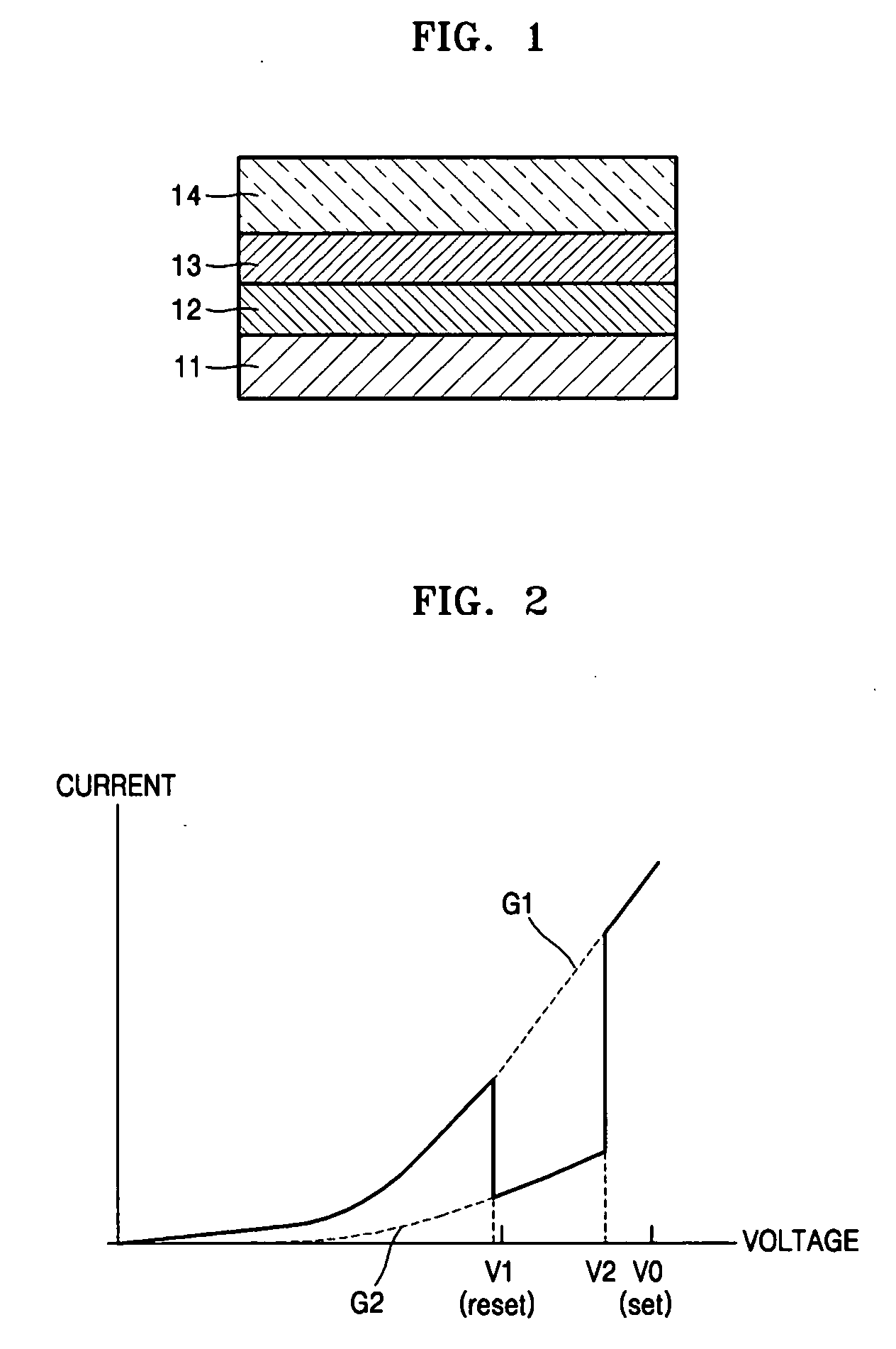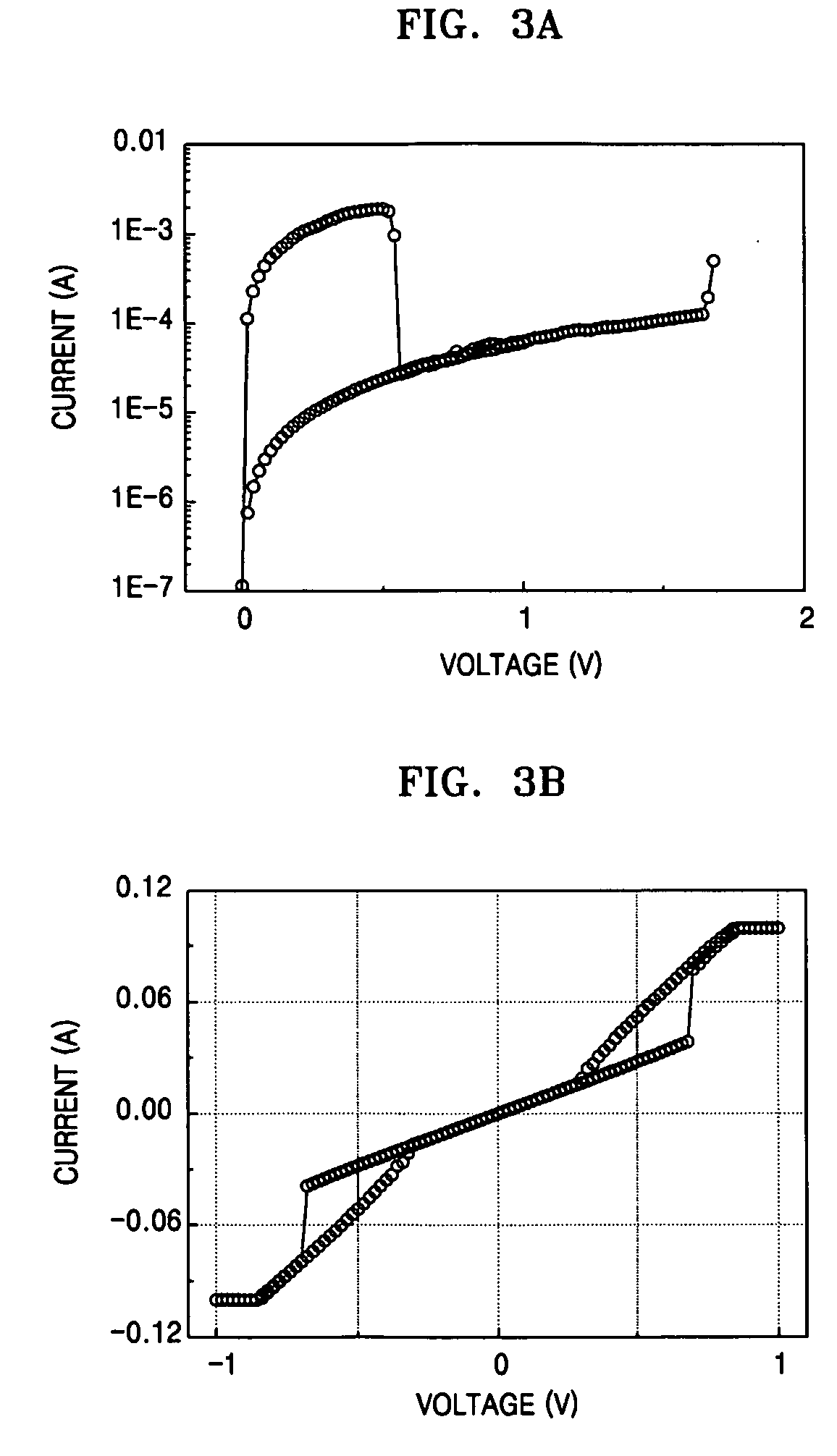Nonvolatile memory device having two or more resistance elements and methods of forming and using the same
a technology of resistance elements and memory devices, which is applied in the direction of digital storage, semiconductor devices, instruments, etc., can solve the problems of affecting the processing efficiency of the device, the loss of stored data of the device, and the detriment of the integration density and/or the operation speed
- Summary
- Abstract
- Description
- Claims
- Application Information
AI Technical Summary
Benefits of technology
Problems solved by technology
Method used
Image
Examples
example electrical
[0054] Example electrical characteristic graphs of the materials used in the first resistance layer 12 and the second resistance layer 13 are shown in FIGS. 3A through 3C.
[0055]FIG. 3A is a graph illustrating electrical characteristics of Ni1-xOx used for the first resistance layer 12. FIG. 3A illustrates two resistance characteristics in a voltage range equal to or lower than about 0.55 V. That is, because Ni1-xOx shows two resistance characteristics at a same applied voltage, it can be used as a data storage part of a memory device.
[0056]FIG. 3B is a graph illustrating electrical characteristics of V2O5 used for the second resistance layer 13 according to an example embodiment of the present invention and FIG. 3C is a graph illustrating electrical characteristics of TiAlO3 used for the second resistance layer 13 according to an example embodiment of the present invention. Referring to FIGS. 3B and 3C, these have various voltage-current states, and particularly, current flows by a...
PUM
 Login to View More
Login to View More Abstract
Description
Claims
Application Information
 Login to View More
Login to View More - R&D
- Intellectual Property
- Life Sciences
- Materials
- Tech Scout
- Unparalleled Data Quality
- Higher Quality Content
- 60% Fewer Hallucinations
Browse by: Latest US Patents, China's latest patents, Technical Efficacy Thesaurus, Application Domain, Technology Topic, Popular Technical Reports.
© 2025 PatSnap. All rights reserved.Legal|Privacy policy|Modern Slavery Act Transparency Statement|Sitemap|About US| Contact US: help@patsnap.com



